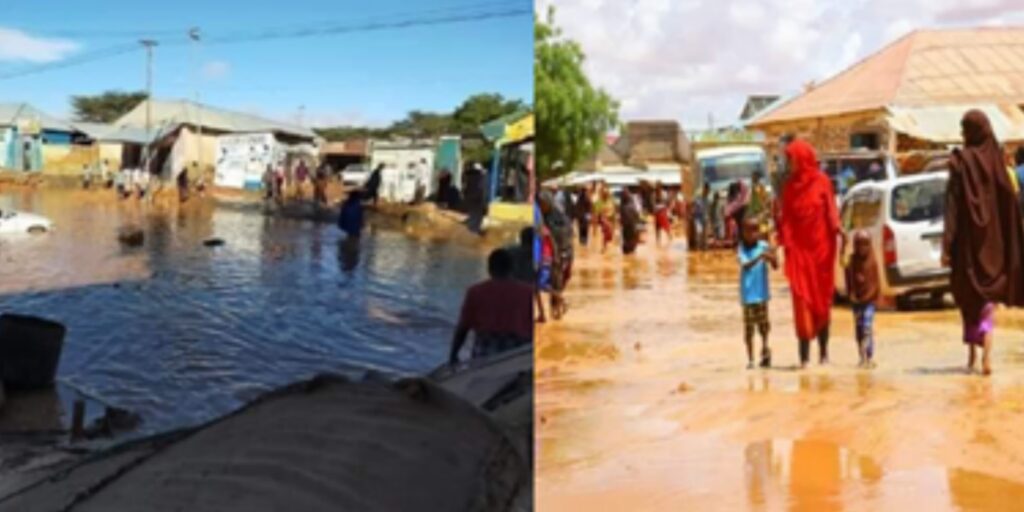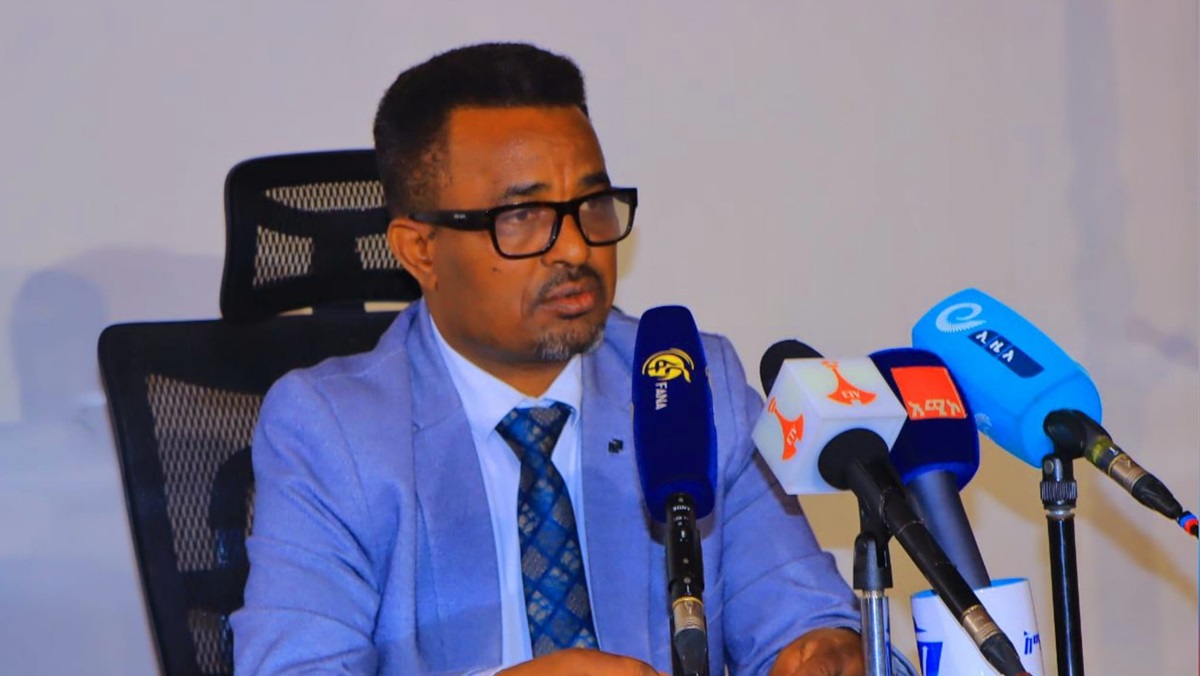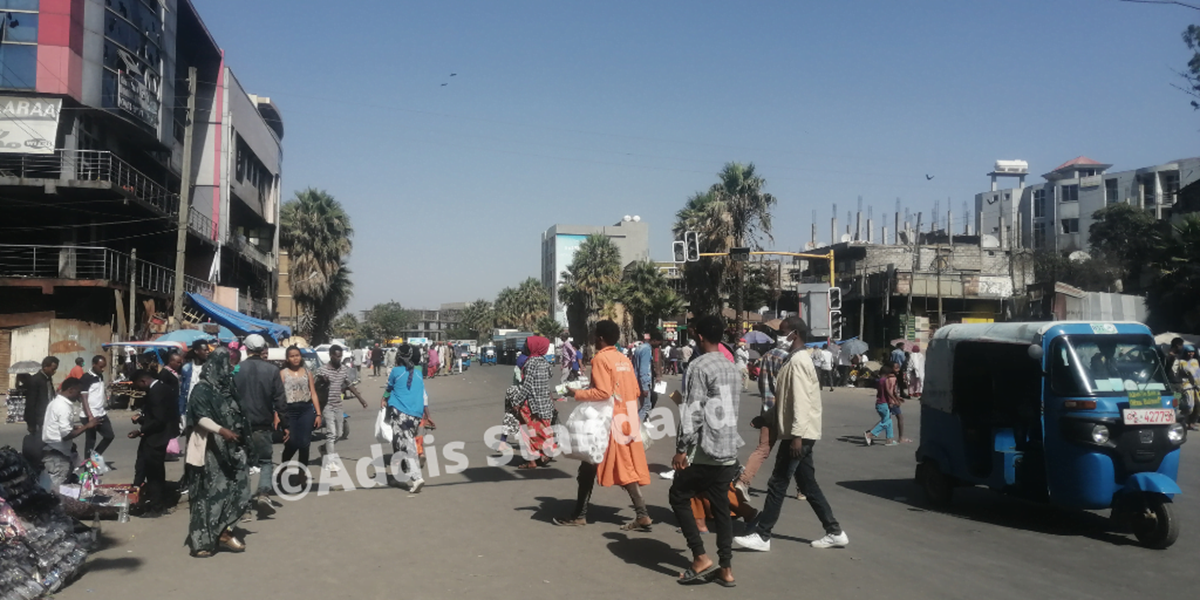Commentary: Ending recurrent tragedies in Somalia’s ‘flood town’ Qardho

By Barkhad Abdikadir Ali
Garowe, Somalia – Although floods are a universal tragedy that annually threatens the lives of many people and properties on earth, some nations pay their highest price and make the most effort to overcome or at least control the impact of flood risk by developing and implementing Watercourses Master Plans (WCMP), while others do not have or implement national action plans for subsequent developments so as to minimize potential flood damages for all flood risks. But in our case, Somalia, there is “Sustainable Flood Management and Risk Reduction Action” prepared by the Ministry of Energy and Water Resources and the United Nations Environment Programme, which is said to be a nature-based solution for flood and drought management.
For the last two decades, the city of Qardho in Somalia, with a population range of 110,000–120,000 people, has experienced frequent dire flooding cases, and until now, it’s been on the front lines when it comes to flood risks due to a failure of its two streams that merge upstream of the city, making it prone to flash floods, with damage to infrastructure. Whenever flood occurrences happen in Qardho District areas, the floods disrupt and disconnect the town due to a lack of alternative access roads, and all social services and daily activities cease.
Causes of Qardho floods
Year after year, there are no diversion canals, the main stream is getting full of deposited silt, which alters the river’s or waterway’s natural depth, and during flooding, the fast-moving runoff through that river spreads everywhere, as the river has neither supportive embankments nor a deeper waterway path. Also, when the water reaches the main central tarmac road, there are no waterways that the storm water can flow through as there are buildings blocking the natural waterways. In recent times, the water has reached areas where it never had before.
An academic study by Eng. Abdirahman X. Shire on the annual floods of Qardho stated that carelessly and properly unplanned structures built close to the stream channel have had a significantly increased negative impact on the drainage infrastructure in Qardho town. Also, the overlay of the stream network map over the topography map shows that certain building structures are built over natural stream channels. During rainstorms, these structures and some road diversions hinder the natural flow of water. Buildings and shelters were erected haphazardly in the community, according to a field survey, with the majority of residents having no building permits.

Flood incidents
On May 2020, a flood record hit Qardho, which badly disrupted most areas of the city, causing the deaths of a dozen people, disrupting livelihoods, scouring small-scale farms, severely damaging public buildings and residential buildings, taking several cars, collapsing three new public boreholes, damaging city roads, and hitting the city’s main market as well. The flood came while it was a Ramadan day (people were fasting). Food demand was higher than usual, and due to the COVID-19 pandemic, there were difficult transportation restrictions throughout the globe, which gave rise to low food imports with the highest prices ever.

The next day, a high-ranking state government delegation led by President Said Deni and international and local NGOs arrived in the city in order to see and evaluate the flooding impact; also, different media outlets went over there to report the flood size and more about the reality on the ground.
On the other hand, the president of Somalia, Mr. Farmaajo, talked about the Qardho flood incident and said: “We share with you the condolence and pain, as we continue & contribute to the rescue of the vulnerable families who are facing the crisis today…”
Throughout their stay in the city, they have seen the extent of the flood impact and released detailed facts and figures as well. According to the assessment report, the number of people being displaced was 11,256, while thousands more were indirectly affected, 4,569 houses were damaged or destroyed; 15 schools were damaged; and 23 vehicles were either partially damaged or totally destroyed.
During that incident, Somalians living in the country and abroad reached out and shared their feelings for the Qardho people. Moreover, they did urgent fundraising and contributed a lot to the catastrophic event. Plenty of food trucks from other cities and more than $2.7 million in cash were sent by Somalians around the globe to the people of Qardho for compensation and as part of a durable solution.
If we refer to the last financial report presented by the committee at the beginning of late January 2023 to the people of Qardho, they transparently shared with the event attendants the funds they received and exactly how they managed it.
The total amount of money collected by Qardho’s flood advocacy committee was $2,705,253.96; the total cost paid by the committee for compensation (to the business owners who lost their properties in the disaster), sanitation (pumping out flood water from clogged properties & roads using sewage tankers), and transportation cost for food distributions was $1,081,415.71; and the remaining $1,623,838.25 is kept under bank account up to now; lacking the national and state governments’ expected contribution as they promised when the incident occurred. This is why there is no sustainable solution to the recurring floods, and the city is left vulnerable to the floods.
Similarly, on October 22, 2022, another overwhelming flood wave hit the city, and a joint mission paid a visit thereafter to assess the impact of the flooding and the general humanitarian situation, to see the affected areas adequately, to address the needs of the affected communities, and to see firsthand the extent to which the response must be addressed.
“Most areas of the city are flooded, even the water has surpassed the bridge; rain without thunder and lightning brought back a lot of water to the city,” said Abdi Said, governor of Karkaar region.
Thirdly, on May 2, 2023, Qardho was flooded soon after the seasonal main stream received high intensity rainfall, which resulted in the city encountering a wide range of runoff channels with inadequate waterways.
Apart from an emergency relief response provided to the affected people, the government of Puntland has not officially unveiled details of the planned long-lasting solution to the Qardho recurrent floods, but unauthorized rumors say the government is arguing that the available budget is not enough for the expected volume of work to be done.
Moreover, the late minister of environment, Gama’diid, argued that the sustainable solution to these recurrent disasters should be engineering-based rather than a political decision.
On the other hand, as part of a durable solution, it is actually commendable that the government of Puntland, with financial support from the EU, laid the foundation stone of the city’s newly multipurpose market somewhere away from the river and at a higher elevation in terms of topography.
Proposed engineering solutions
A sand dam, or similar small dams, across the river can help reduce flow velocities and temporarily store water in the river when inflow increases. This has been analyzed in both study areas for different dam designs, including sand dams, which are increasingly being applied in Somalia and similar regions to harvest rainwater. Combined weirs are combinations of the sand dam and the V-shaped weirs. The bottom of the V-shaped opening holds back more water than the V-shaped weir, leading to more infiltration, while also being more efficient for flood peak reduction than the sand dam.
Based on the nature-based solutions for flood mitigation (water retention) under the Sustainable Flood Management and Risk Reduction Action of Somalia, the most promising measure is V-shaped, or combined, weirs, which reduce floods by up to 60% in Qardho. The results vary based on the size of the event, the season, and the area, but the v-shaped weirs show the potential to significantly reduce flood peaks and thereby reduce losses of lives and property in downstream settlements. The highest efficiency can be expected at locations where floods are particularly flashy, with high maximum flow values but limited total run-off.
Recently, experts from different technical backgrounds (urban planning, civil, water, and environmental engineering) repeatedly visited the city to investigate the root cause of Qardho’s recurrent flooding impact and all available cost-effective and reasonable adjustments that can be made for a sustainable solution: The following are key empirical recommendations:
1. Floodways Modification: extensive river treatment work should have to be carried out in order to change the main stream’s or channel’s characteristics, typically for the purposes of reducing flood damages by increasing its overall conveyance. This can be accomplished by widening and/or deepening the channel, reducing the friction by removing woody vegetation and the deposited soil, and finally scaling up the conveyance of the stream without overflowing onto the adjacent buildings. And partially destroyed structures that come across floodway channels crossing through the mainstream.
2. Bypass Channel: diverting flood water from the city by constructing drain channels directed towards the Xorgoble stream, which some engineers believe would be less expensive and geographically more suitable than the bridge route (which is larger and uneconomic).
Editor’s Note: Barkhad Abdikadir Ali, a professional civil engineer based in Puntland, Somalia. Analyst on Horn of Africa affairs, climate change, and the Chinese Belt and Road Initiative. He can be reached at barkhadawcali@gmail.com








